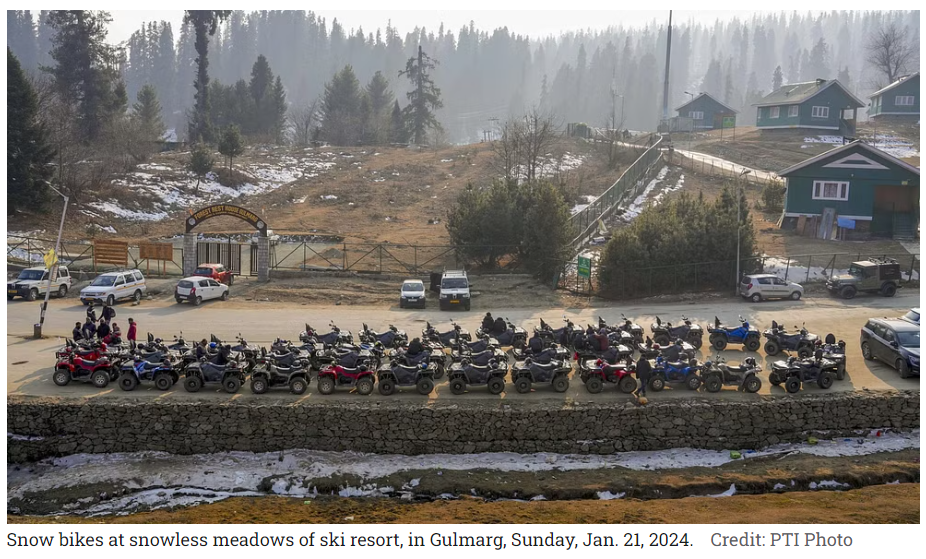Water levels in the reservoirs, including the Bhakra reservoir, are much below normal.

When winter comes, the snow comes with it and not far behind it, but this year there is no snow in most of the higher ranges of the Himalayas. It has been a dry winter in most places with an unusually high rain deficit. Places which have been famous for snowfall, like Gulmarg in Kashmir, are brown and green and not frosty white as usual. A lack of snow and rainfall in Uttarakhand has led to an increasing number of forest fires. Towns like Almora and Nainital have hardly had any snow and rainfall this season, and the forests are burning, as in the summer.
Himachal Pradesh has also seen many forest fires. There is no snow or precipitation in the higher reaches of the state, after an abnormally wet monsoon. The vagaries of weather are the result of climate change and global warming and unusual weather phenomena like El Nino.
The failure of snowfall and the rainfall deficit will have serious consequences on the lives of the people and the economy of the region. Extreme weather patterns like summer heat waves have led to rapid melting of glaciers that are a major water source for the region. The entire December and most of January has been snowless.
Most of the rivers depend upon the seasonal snow cover for their discharge. Water levels in the reservoirs, including the Bhakra reservoir, are much below normal. Snowfall ensures water security for remote villages in the summer. Snow also ensures the presence of frost which protects winter crops. Crop yields are expected to fall drastically. The economy of many places in the region depends on skiers and tourists. There are major infrastructural facilities and other arrangements made specially for winter tourism in places like Gulmarg. The livelihood of large numbers of people depends on that. Their life in other months of the year also depends on the income from the winter months.
Studies have shown that a 1 degree Centigrade increase in temperature can reduce the amount of water stored in snowpacks in early spring by nearly 20 per cent.
Economies and lifestyles which depended on the traditional patterns of weather are likely to be severely disrupted. Governments will have to be ready to address the consequences of these problems, including migration of people. In the longer term, there is need to adapt to the changes with plans for new agricultural practices and water management techniques.
Other parts of the world have also seen such changes in weather patterns. The year 2023 was the warmest year on record, but the world’s response to the warnings about climate change has so far been indifferent.
Article Credit: deccanherald